Blog
November 17th, 2010
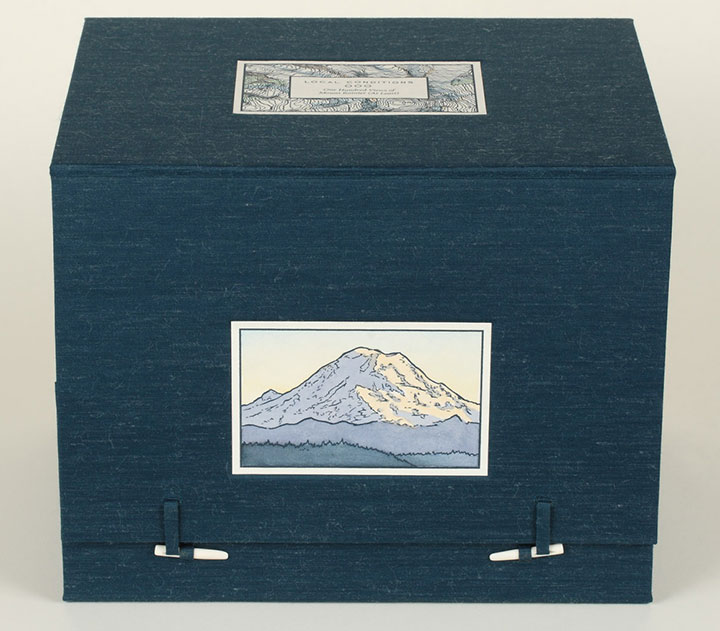
I’ve been hemming and hawing about how best to share this thing with you. Even with Sarah’s excellent photography, it’s just a lot more difficult to explain how it works when I can’t hold the book out into space and demonstrate in real time. It’s a problem with every artist book out there—an interactive sculpture, complete with moving parts, that also happens to tell a story is just dern hard to document.
So for now, I’m going to go through the mechanics of the thing, step by step, and go into the whys and wherefores in other posts. And for those of you who might not be familiar with the term artist book, you’re going to find out really quickly that this isn’t your basic hardcover book. The definition of “artist book” is way too broad to go into within this post (click the above link to go to what I wrote on my F.A.Q. about it), but I’m hoping that by the time you get to the bottom of this post, you’ll have an idea of just how broad the term can be—and what crazy things can happily fall into the category.
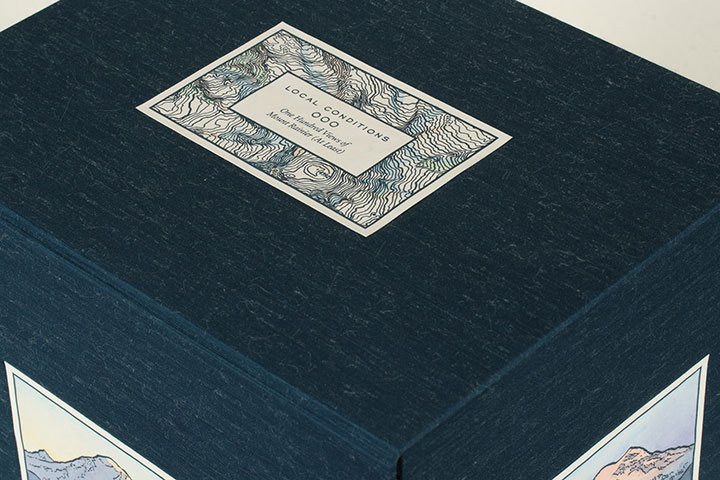
Okay, let’s start with the box. When it’s all closed up, Local Conditions is almost a cube (a 10-inch cube that’s heavy enough to be hiding a sack or two of flour inside). On the topmost face of the box is the frontispiece, containing the title and a topographic map illustration of the summit of Mt. Rainier.
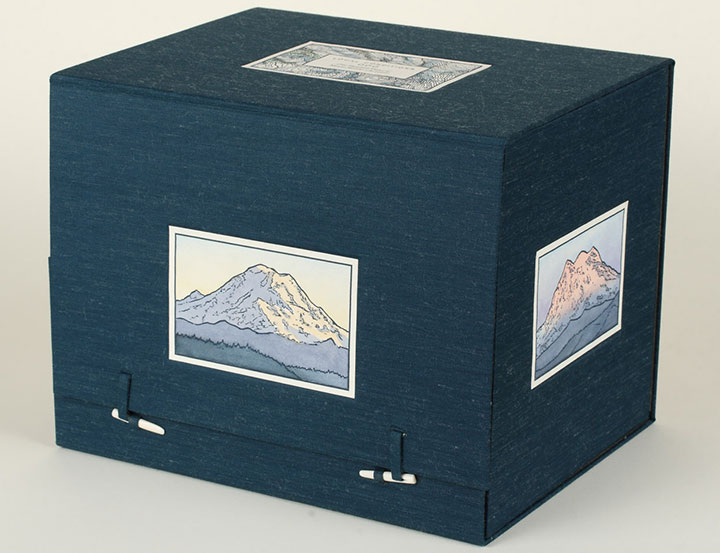
The north, south, east and west sides of the box are faced with illustrations of the corresponding faces of Rainier, each depicting the mountain at sunset.
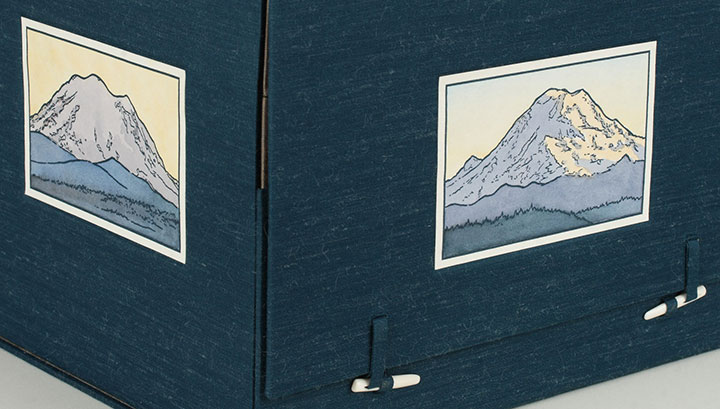
(That’s the eastern face on the left, and the north face beside it.)
Now, those two little bone clasps hold the thing together, and when you flick them out of their loops,
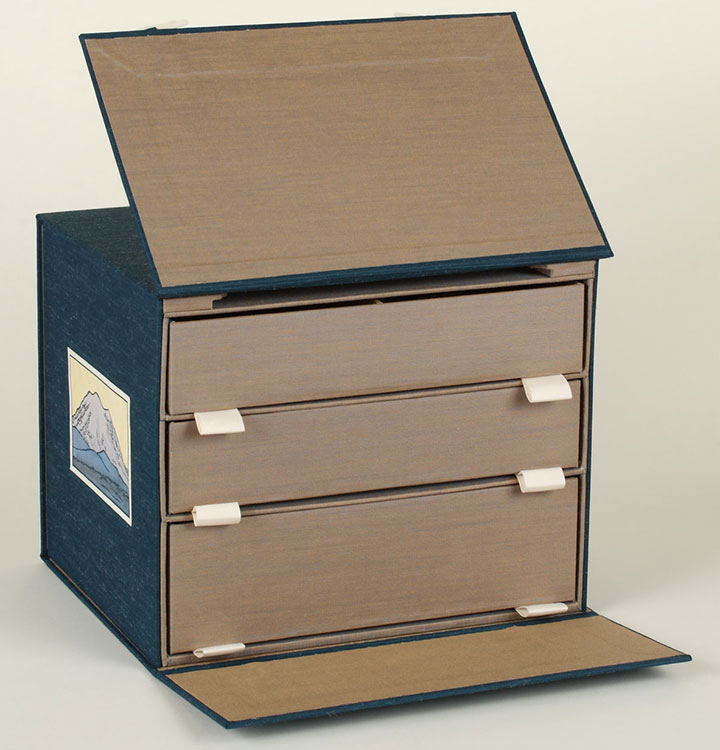
the book opens up, revealing a chest of drawers. Keep pulling on the flap you just raised,

and you’ll find that you can take the whole outer wrapper off and read the colophon (see below) printed on the inside.
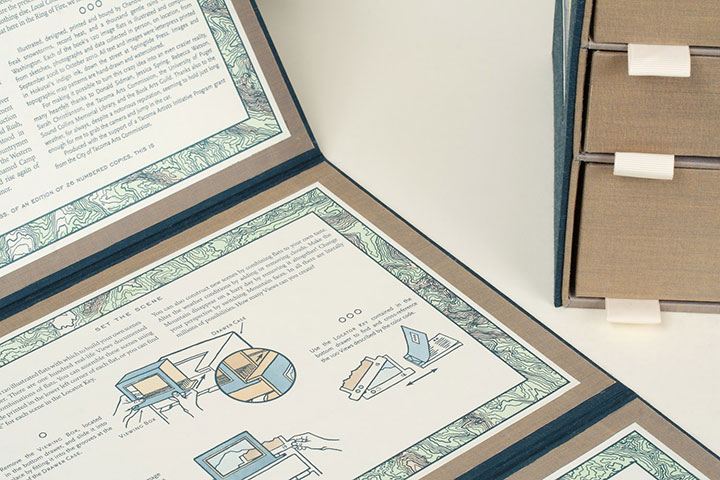
The other panels on the wrapper include detailed instructions on everything the book does.

Next, let’s open the drawers—nested in the bottom one you’ll find a Viewing Box (yeah, I know … a box, within a box, within a box … sorry.) that consists of a window, a background panel, and two tabs that stick out from either side.

The tabs match up with the grooved unit at the top of the chest of drawers, and the Viewing Box slides into place.

So now the box is fully expanded, and the book is assembled for use. Now comes the fun part.
Take a closer look at the Viewing Box, and open the top two drawers.

Inside the drawers you’ll find a series of cut-out cards, each printed with a different image. These little image flats slide right into the slots of the Viewing Box,
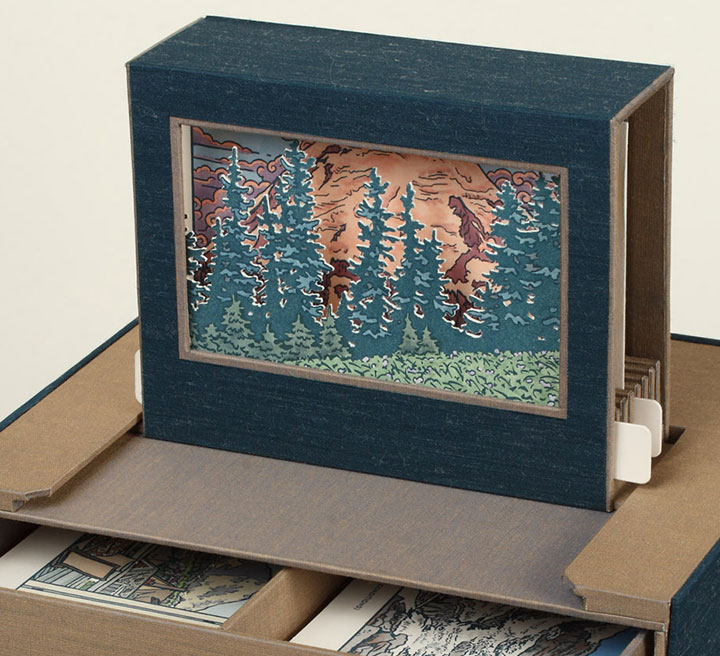
and face out the window to form an instant picture—kind of like an old-fashioned stage set.
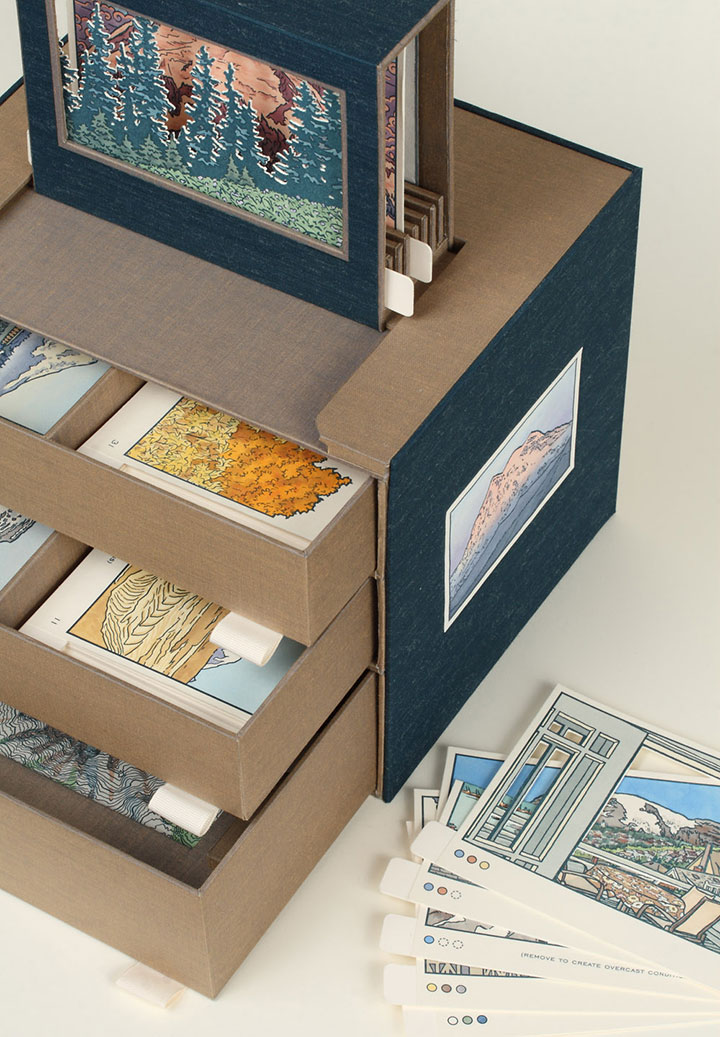
Now here’s the thing:
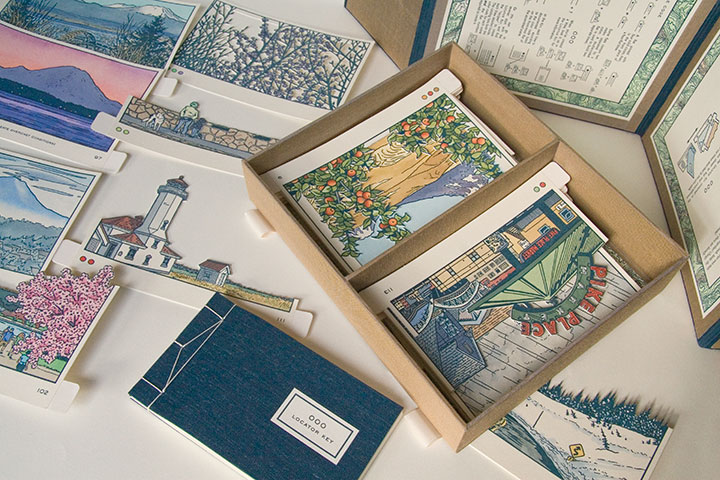
There are 120 flats to choose from. One hundred and twenty. Each one hand-printed, hand-painted, hand-cut.

By combining, layering and switching the flats in and out of the Viewing Box, you can create seemingly endless scenes of Mt Rainier. I came up with one hundred, and documented them as part of the book (again, I’ll elaborate later), but I’m more interested in how many you can dream up.
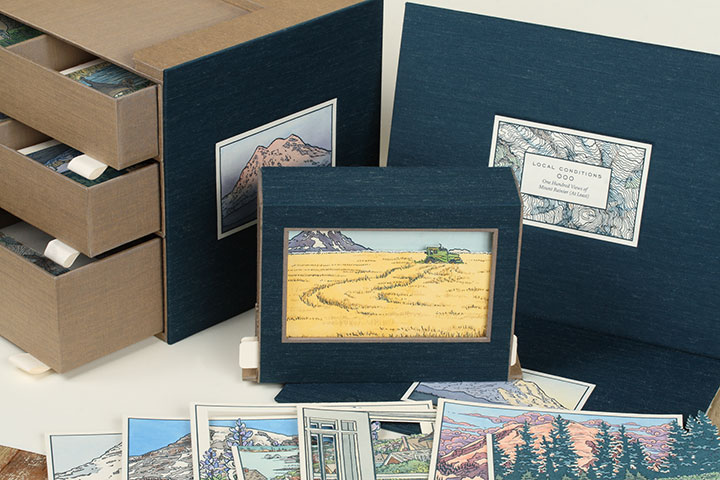
(Hint: a lot. Thousands. Millions. To be precise, 1.4 x 1015, or 1.4 quintillion, if you really wanted to push the envelope.)
• • • • • • • • • • • • • • • • • • • • • • • • • • • • • • • • • • • • • • • • • • • • • • • • • • • • • • • • • • • •
Local Conditions: One Hundred Views of Mt. Rainier (At Least)
Edition size: 26 numbered books and 5 roman-numeraled artist proofs
Book size: 10 x 8 x 8 inches when closed
Viewing window: 3 x 5 inches
Artist book consisting of viewing box and 120 image flats, illustrated and compiled from data collected in person, on location, over the course of two years. Housed in a set of drawers with nested stab-bound book and Japanese-style outer wrapper. Images and maps are hand-drawn, letterpress printed and individually hand-painted with watercolor. All image flats are hand-cut.
For price/purchase info, please contact me.
Edited to add (November 2011): As a supplement to the artist book, I also created a suite of 15 limited-edition letterpress prints, featuring some of my favorite scenes from the book. Just like the flats in the book, each print is letterpress printed and hand-painted with watercolor. You can find all 15 prints in the shop.
Colophon reads:
Japanese artist Katsushika Hokusai (1759 – 1849) is perhaps best known for his seminal works, Thirty-Six Views of Mount Fuji and One Hundred Views of Mt. Fuji. The two series of woodblock prints, published from 1829 to circa 1847, depict the sacred peak within the context of landscapes and scenes of daily life. At the heart of the series is Hokusai’s own obsession with immortality, and his fascination with Fuji’s eternal presence.
Therein lies the rub: Fuji is anything but eternal. Beyond the usual, abstract geologic transience of eroding rock and drifting continents, Fuji is an active stratovolcano. Its days—and those of the lives and lands at its base—are numbered.
Here in Washington state, just forty miles southeast of my home, lies Fuji’s taller, more volatile, American twin. Variously named Tacobet, Tahoma and Ti’Swaq’, among others, by the region’s indigenous peoples, or simply “The Mountain” by contemporary locals—its most arbitrary moniker, coined in 1792 by Captain George Vancouver, is the one that stuck: Mount Rainier.
It’s easy to forget Rainier’s impermanence. It has presided over thousands of years of indigenous culture, followed by the encroachment and permanent occupation of white settlers. It oversaw the construction of the Northern Pacific Railroad, the fever of the Klondike Gold Rush, the splendor of the Alaska-Yukon-Pacific Exposition. It stood in judgment while the American descendants of Hokusai’s countrymen were imprisoned beside the wooden-frame rollercoaster of the Western Washington Fairgrounds, at the internment center nicknamed Camp Harmony. And it has watched the rise and decline and rise again of Tacoma, the City of Destiny lovingly misnamed in its honor.
Yet all the while, Rainier has changed as much as the tableau at its feet. Its volcanic restlessness shifts its form, as our capricious Northwestern weather masks its appearance. It hides, or dominates, depending on the time of day or year. Even we have proved a catalyst, as our warming climate chases its alpine glaciers into retreat at the speed of industry.
And one day—whether tomorrow or in a million years, in an explosion of ash or by the erosion of time—Mount Rainier will disappear completely. I can’t begin to predict the future, but I can attempt to capture the present moment. One hundred present moments, to be exact. If nothing else, Local Conditions is a reminder of the lesson of this place: that here in the Ring of Fire, we never see the same Mountain twice.
* * *
Illustrated, designed, printed and bound by Chandler O’Leary, through freak snowstorms, record heat, and a thousand gentle rains in Tacoma, Washington. Each of the book’s 120 image flats is illustrated and compiled from sketches, photographs and data collected in person, on location, from September 2008 to October 2010. All text and images were letterpress printed in Hokusai’s indigo ink, down the street at Springtide Press. Images and topographic map patterns are hand-drawn and watercolored.
For making it possible to turn this crazy idea into an even crazier reality, many heartfelt thanks to Jessica Spring, Sarah Christianson, the Tacoma Arts Commission, the University of Puget Sound Collins Memorial Library, and the Book Arts Guild. Thanks also to the weather, for always, despite a notorious reputation, seeming to hold just long enough for me to grab the camera and jump in the car.
Produced with the support of a Tacoma Artists Initiative Program grant from the City of Tacoma Arts Commission.
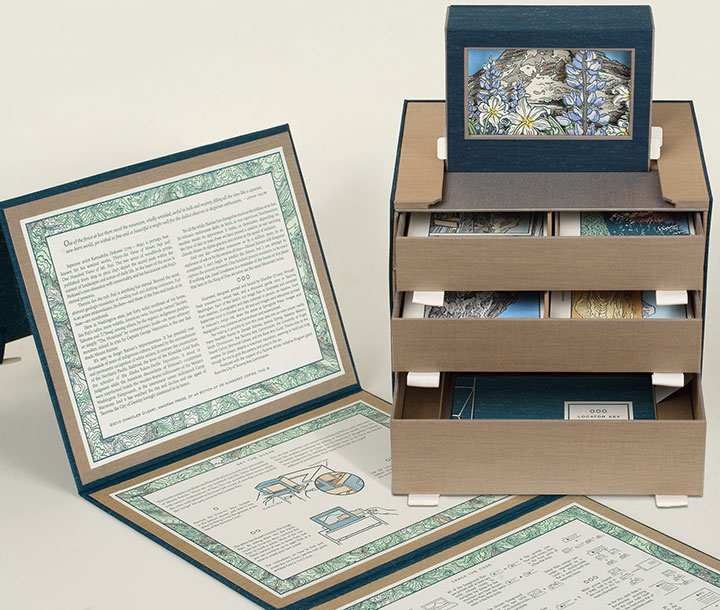
November 5th, 2010
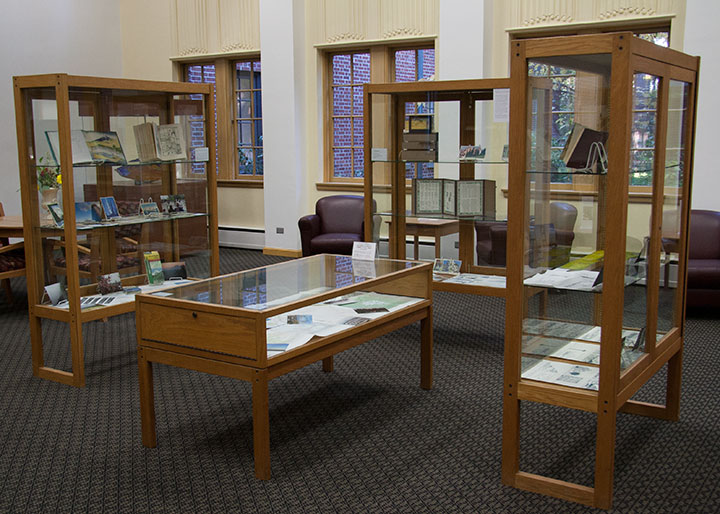
Photos by Sarah Christianson
The show is all set up,
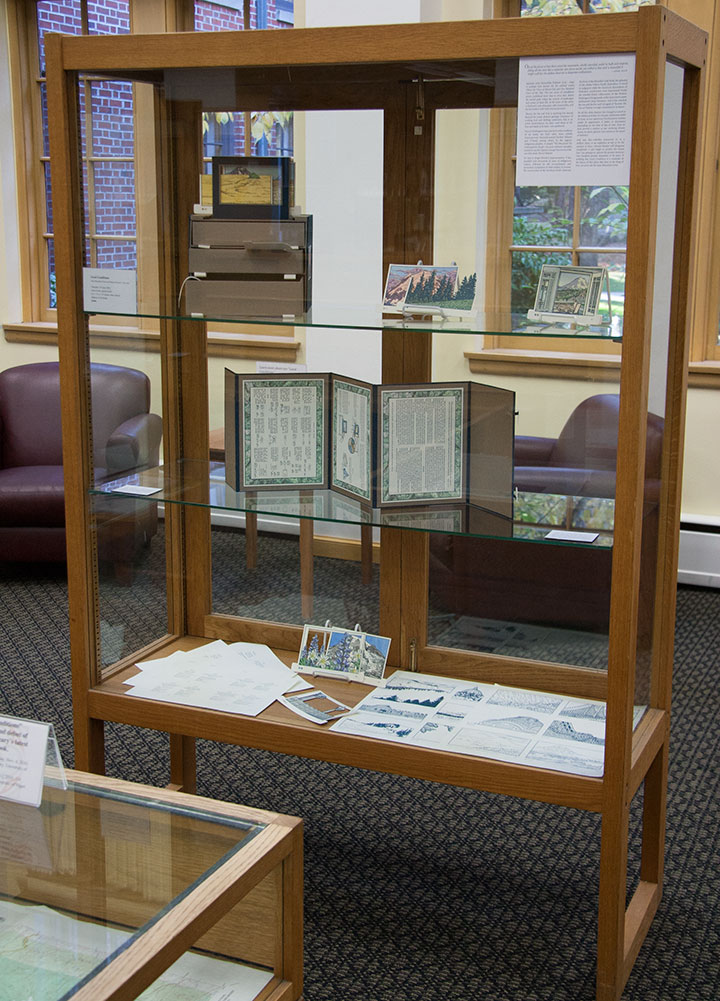
and the book is officially out in the world.
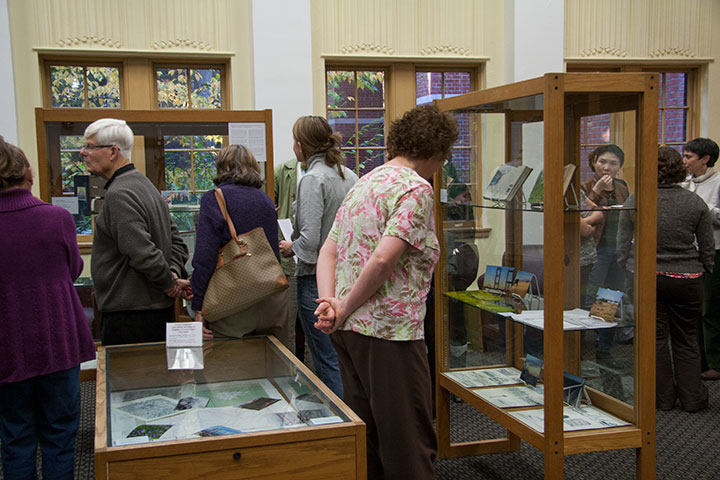
Many thanks to the enormous crowd of folks who descended upon the opening last night—and to my amazing friend Sarah Christianson for providing every kind of emotional and practical support I can think of.
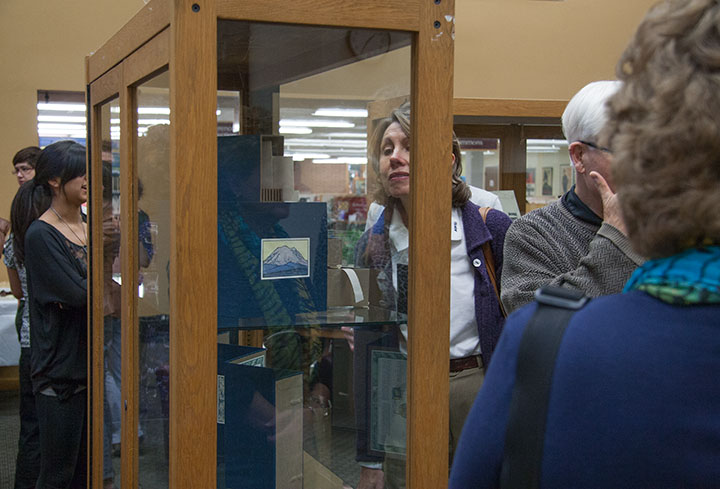
October 22nd, 2010
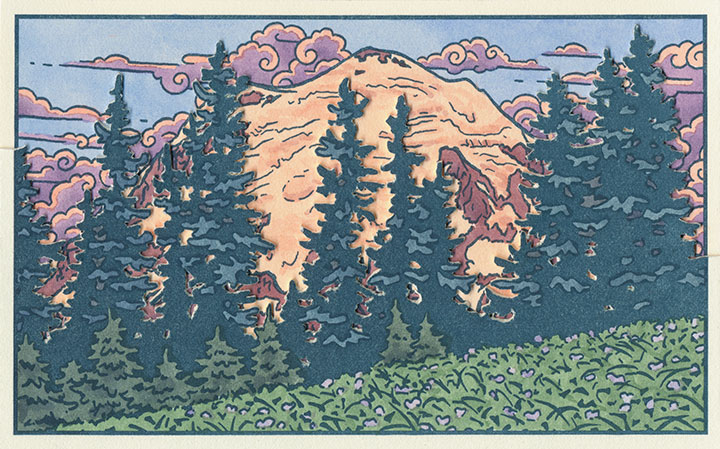
It’s getting harder and harder to keep the secret these days—the Rainier book is almost done, and I’m just dying to show you. But I don’t want to ruin the surprise for T-town, so I’m going to keep it under my hat for just a little longer. But after over two years of being under wraps, the book is gussying it up and stepping out for a solo exhibition. Here’s a brief description of what you’ll see:
Local Conditions, an interactive artist book, captures the changing faces of Mt. Rainier. Explore the 100 Views—or create one of your own—to discover a mountain both immortal and impermanent.
The book contains 120 image flats and a viewing box; by combining and layering the flats, the reader can create literally millions of scenes. Images are illustrated and compiled from data collected in person, on location, over the course of two years. Letterpress printed, watercolored, and hand-bound in an edition of 26 books. Sponsored by the Tacoma Arts Commission.
Exhibit runs November 4 through January 21
Collins Memorial Library, University of Puget Sound, Tacoma, WA
Opening reception: Thursday, November 4, 4:30 to 6:30 p.m.
Artist talk (sponsored by the Book Arts Guild): Thursday, November 11, 7 p.m., Room 020
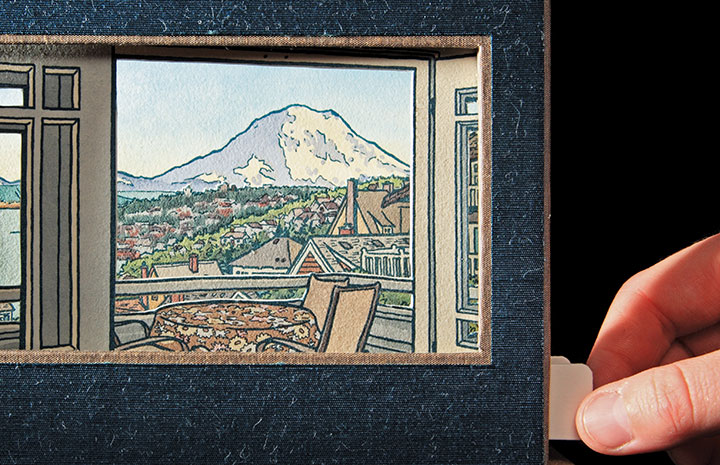
Photo by Sarah Christianson
If you miss the exhibition opening, I’ll have some of the process materials from the book out for perusal at this year’s Studio Tour—as well as the brand new Dead Feminist broadside! (Look for it online in early November.) So be sure to stop by!
Saturday and Sunday, November 6 and 7
Open 10 am to 4 pm.
More information, maps, addresses and directions can be found here.
See you then!
September 22nd, 2010
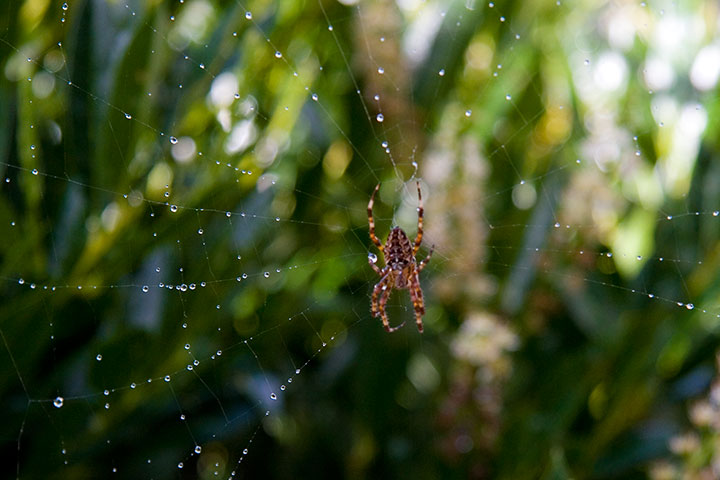
I don’t need the calendar to tell me that fall has arrived. For one thing, the enormous garden spiders are back, guarding our house and reveling in the rain that’s come early this year.
For another, when the sun finally came out, and the skies cleared, the air was suddenly crisper, thinner, fragile in its warmth.
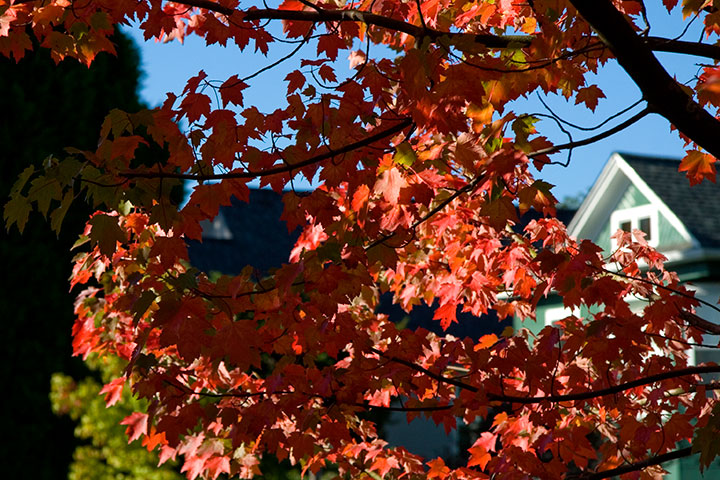
And the trees—
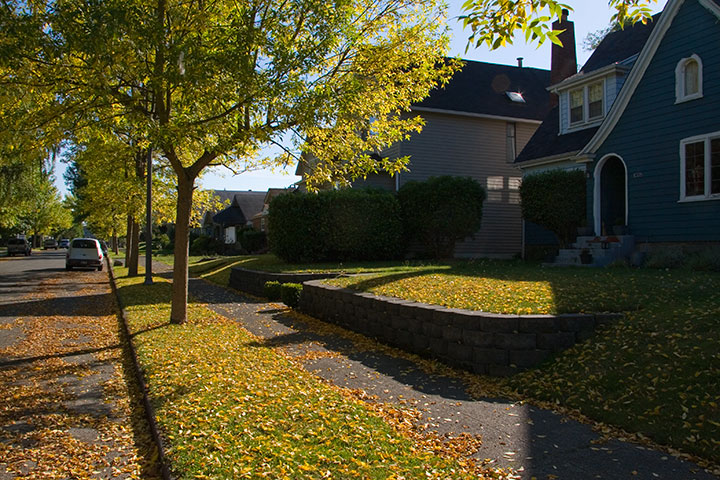
the trees.
I blinked, and it was autumn.
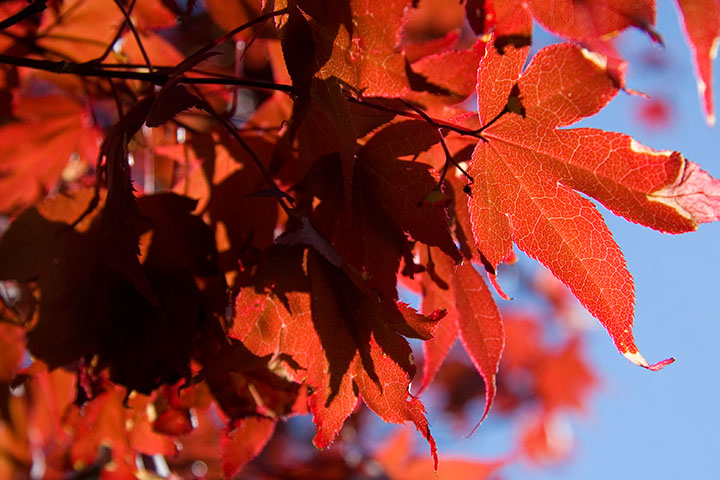
Good thing I was paying attention. I don’t want to miss it.
Happy fall, everyone!
September 15th, 2010

Lately I’ve spent nearly every waking minute of each day with my face an inch away from the drafting table.
Let’s step back, and stretch out a bit.
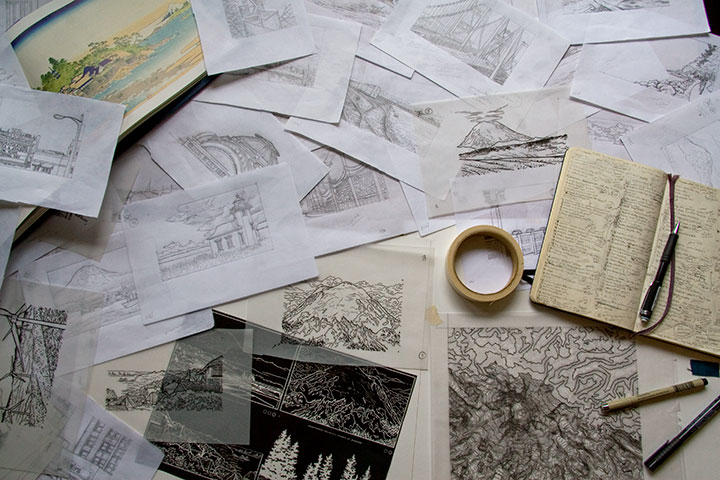
My studio is often a sea of papers—an occupational hazard—but these days the swells have consisted of pencil snapshots for my Mt. Rainier book. Dozens, and dozens, and dozens of them.
Time is ticking down, counting closer and closer to zero, and there are still many miles to cover before the clock strikes deadline. Yet suddenly, things are starting to come together. It won’t be long until I can share something that makes sense—something that looks more like a book, and less like a pile of drawings. I promise that you’ll be among the first to see it when I do.

But if I go missing for long stretches at a time—well, you know where to find me.
August 6th, 2010
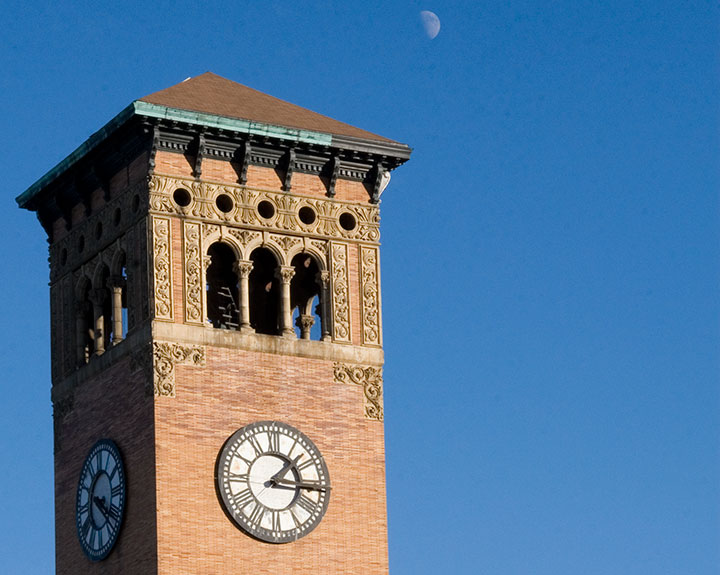
My goodness, how time flies.
As of this moment, I’ve been a Tacoman for exactly two years. Twenty-four months. Seven hundred thirty days. Seventeen thousand five hundred twenty hours.
And counting.
I’m hoping for several million more, because I’ve loved every one—thanks to you T-town folks. Guys, you’re awesome. And generous, to boot—I think I had a stroke or something when I picked up my copy of this week’s Weekly Volcano and found my name printed next to “Best Visual Artist.” Holy moley. Thank you for the vote of confidence—you’re inspiring me to git to work!

Speaking of work, which I’m not quite ready to show you yet, evidence of the past two years has been on the front burner lately. Since I first came up with the concept for my Mt. Rainier book, I’ve covered a lot of miles in our fair state. And above all else, what I love about the Pacific Northwest are the contrasts. From oceans to mountains, rain forests to deserts, farm fields to bustling cities—it’s hard sometimes to remember that all of this is close to home.
So before I get back to a little picture-drawin’ next week, I’ve compiled a smattering of photos taken since my last anniversary post to illustrate what I’m talking about.
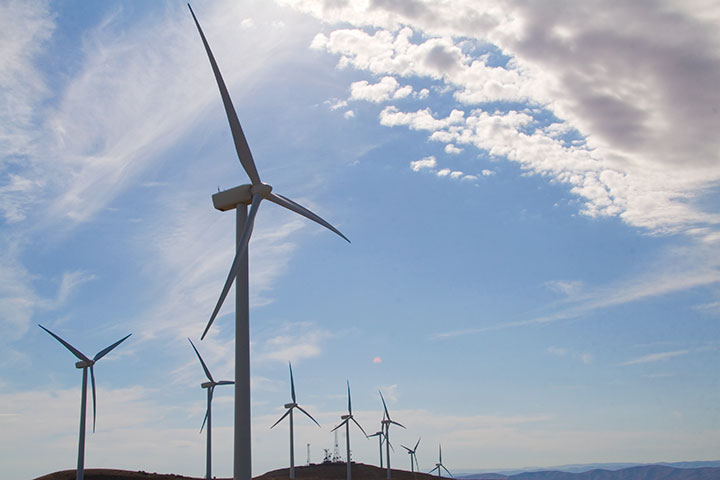
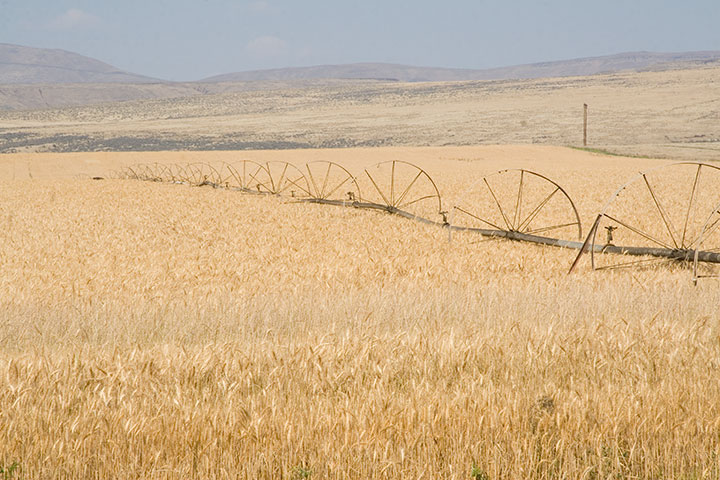
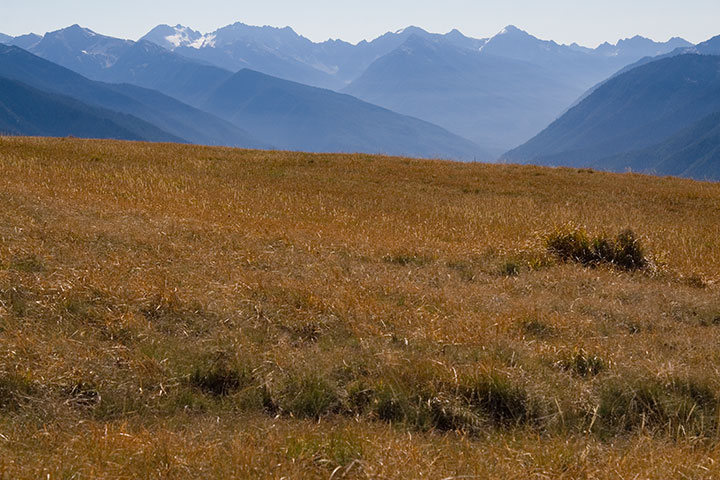
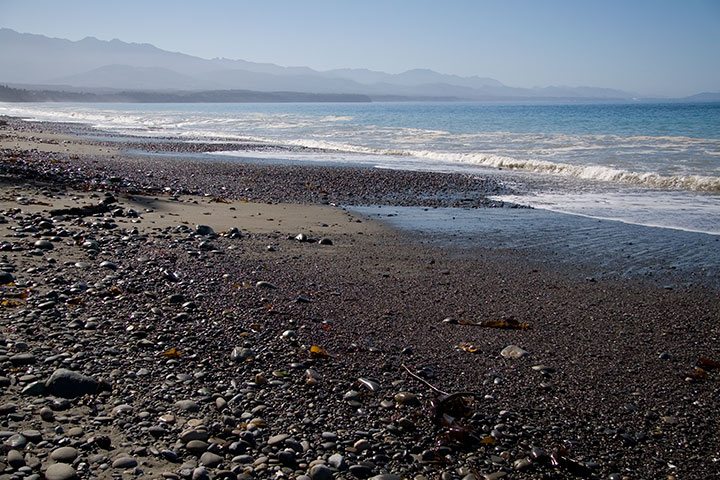

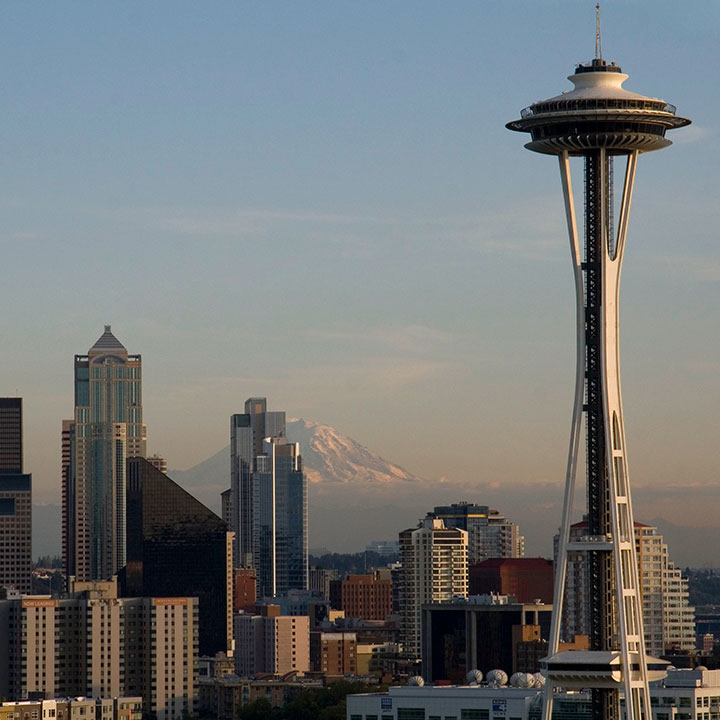
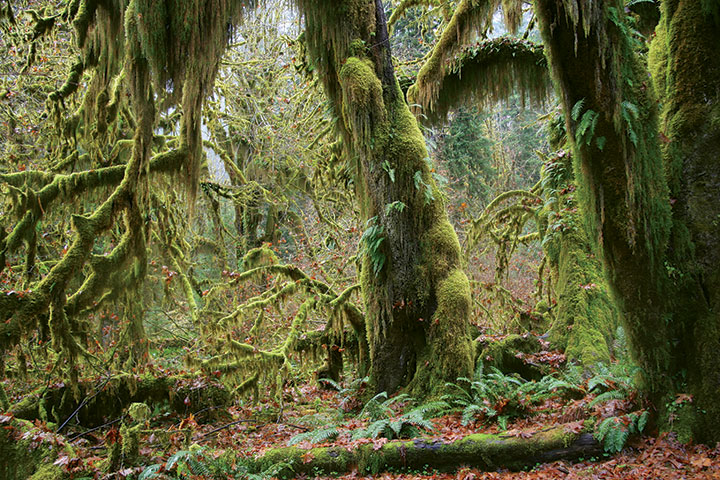
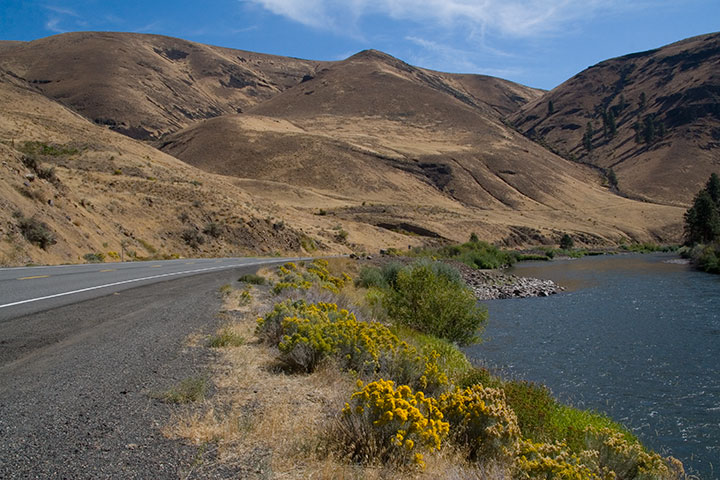

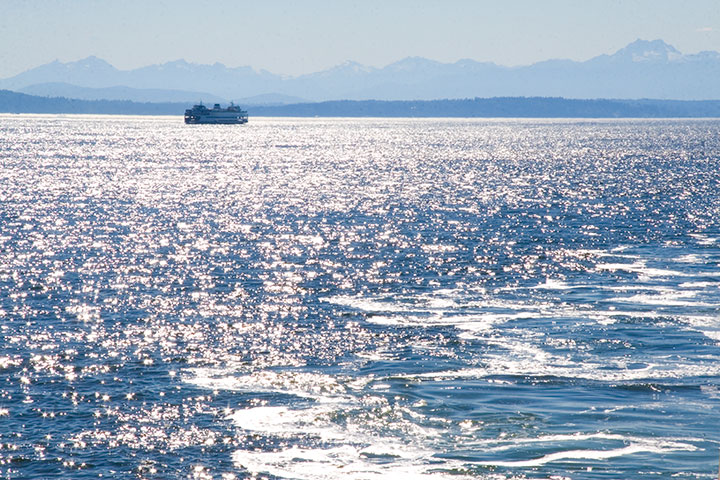
In two years I’ve amassed nearly thirty thousand digital photos of the Northwest—and that’s just of the relatively small hunk of territory I’ve managed to cover in that time.
Here’s to the next thirty thousand photos, and the next seventeen thousand five hundred twenty hours—I wonder what they’ll bring.
July 5th, 2010
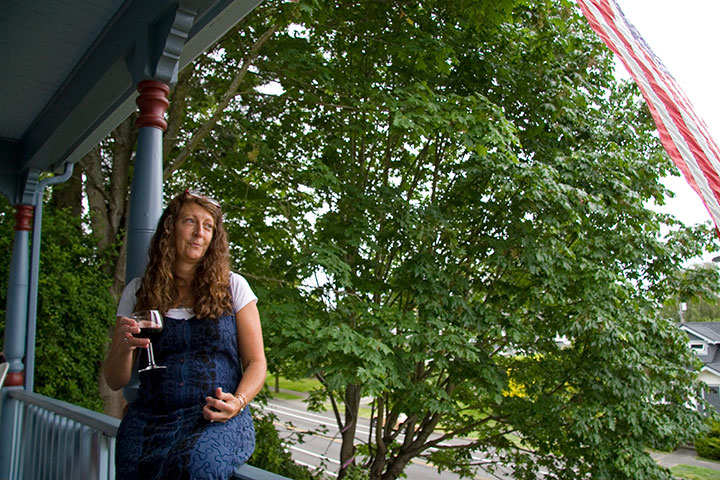
This is Carol, a fiery Sicilian kindred spirit and one of my favorite-est people on the planet. She and her fabulous husband, Jeff, hosted a Fourth of July shindig in their garden today, threats of rain and cold, dreary weather be darned.
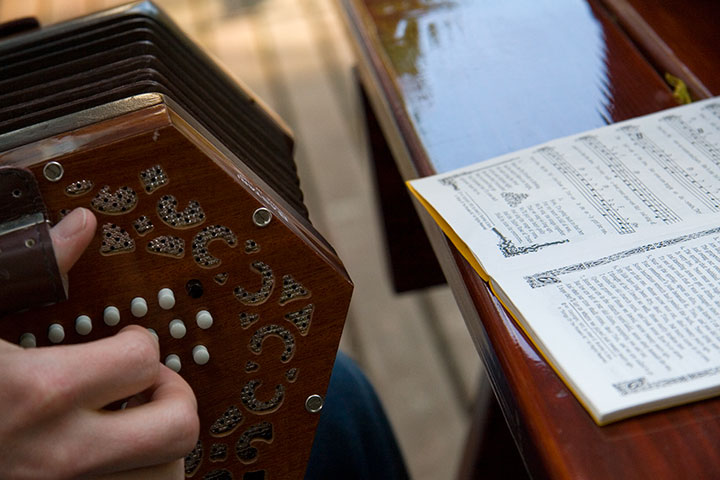
There was a little music,
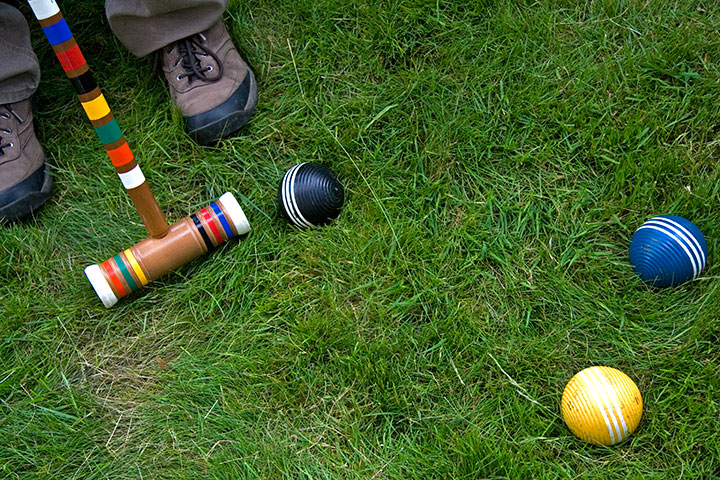
a healthy dose of croquet,
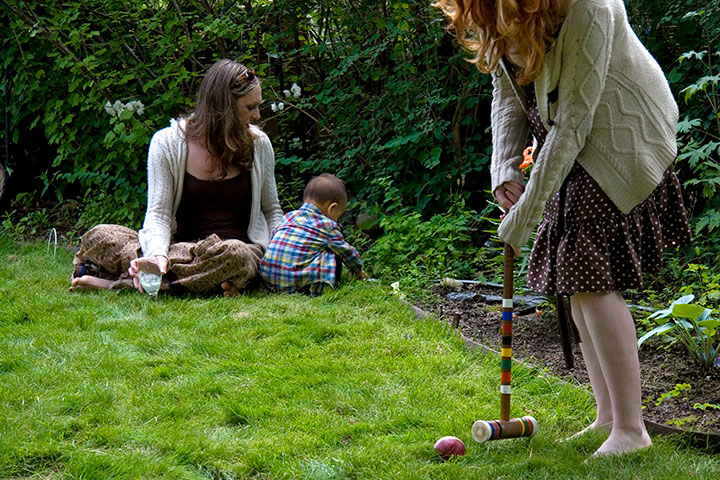
(with the added hazard of the course bordering a rhododendron thicket and a 30-foot drop to the street below)

a whole lot of laughter,
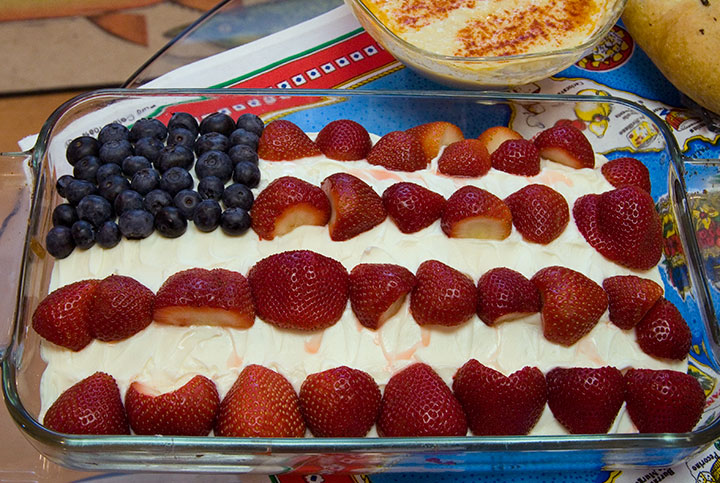
and a walloping smörgåsbord that included plenty beyond your typical Fourth o’ July fare. Hey, hummus goes great with stars-and-stripes cake!
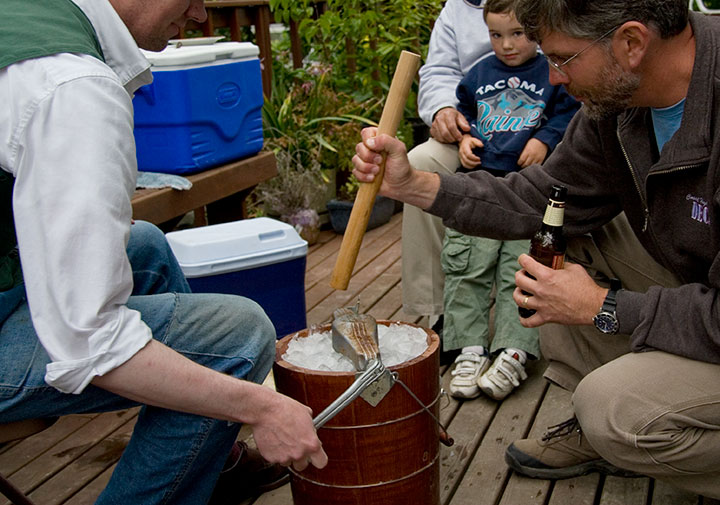
We contributed our ice cream crank, plenty of mashed strawberries, and our upper body strength.
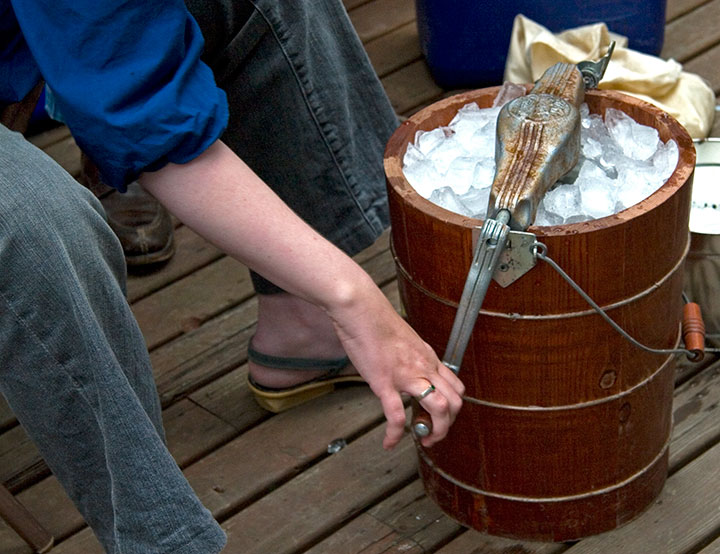
I’m glad there were plenty of people to share the job of cranking, because I like to cut to the chase.
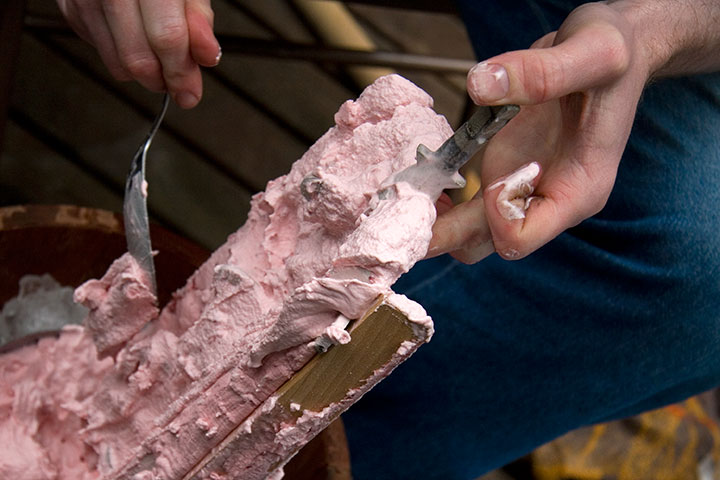
Namely, this. My favorite part is when everybody grabs a spoon and helps clean off the dash,
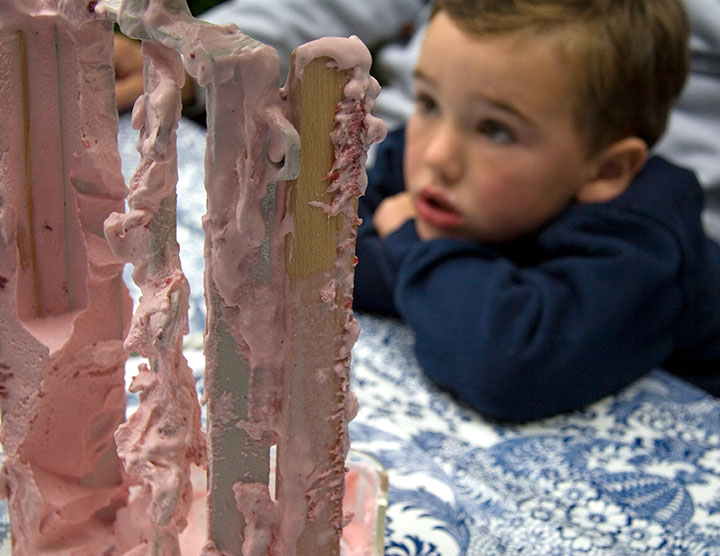
though I’m sure the novelty alone was the highlight for some. Sure, it was a little cold for ice cream (we’re not exactly known for hot summers here), but everyone just threw on another clothing layer before digging in.
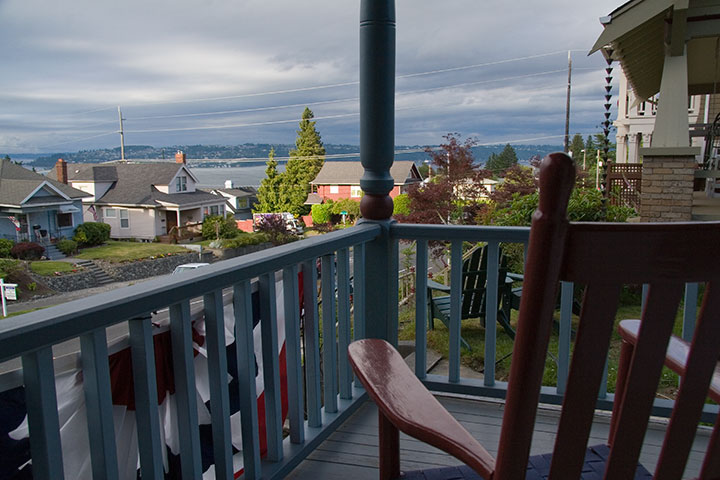
After we had all eaten ourselves silly, everyone gathered on Carol and Jeff’s porch, which faces the Sound—
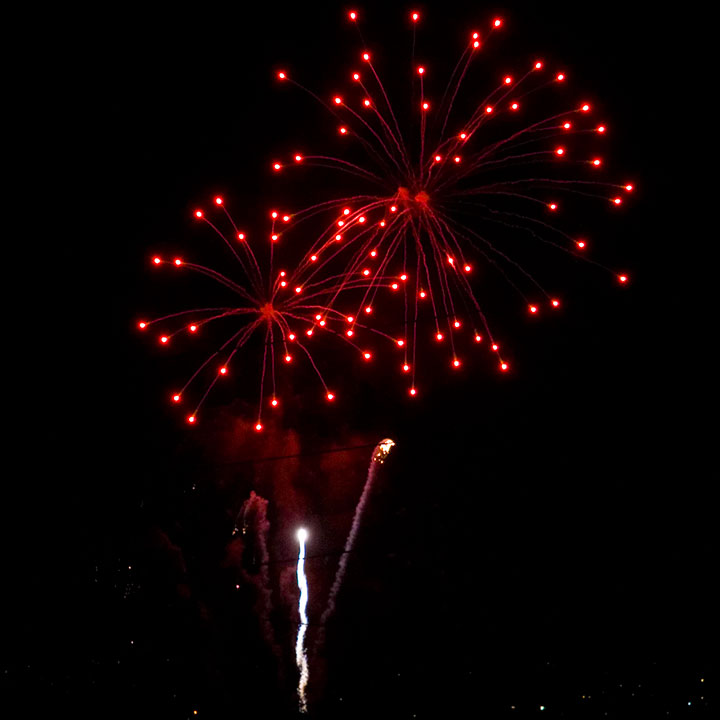
—and provides a front-row seat for the main event.

Happy Independence Day!
June 24th, 2010
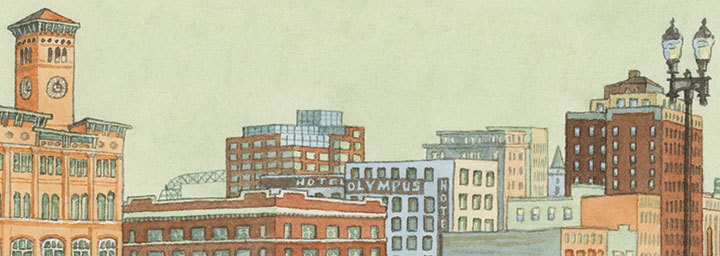
I did this little watercolor as part of a commissioned project that ended up being canceled. I’m a little sad the project won’t see the light of day, but the morning I spent sketching downtown will always be time well spent.
June 11th, 2010
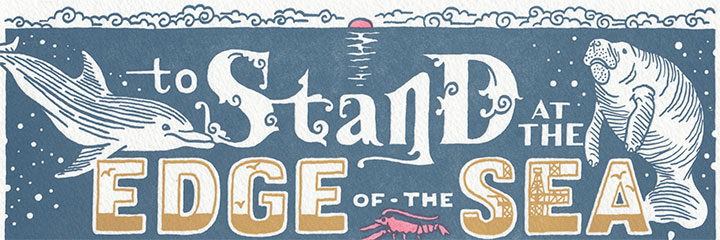
I meant to post this last night, but it was all I could do just to get to bed and not fall asleep on the floor, buried under all the receipts and mailers.
So as of last night, twenty-four hours after posting Drill, Baby, Drill online, we are down to eleven numbered copies. Eleven! I am just completely floored. I think the response you folks have given us may have burned a hole through my computer screen.
Thank you to everybody who had to put up with my dropping the ball when it came to updating the quantities on Etsy. I wandered away from the computer a couple of times—once for this, on our garage:
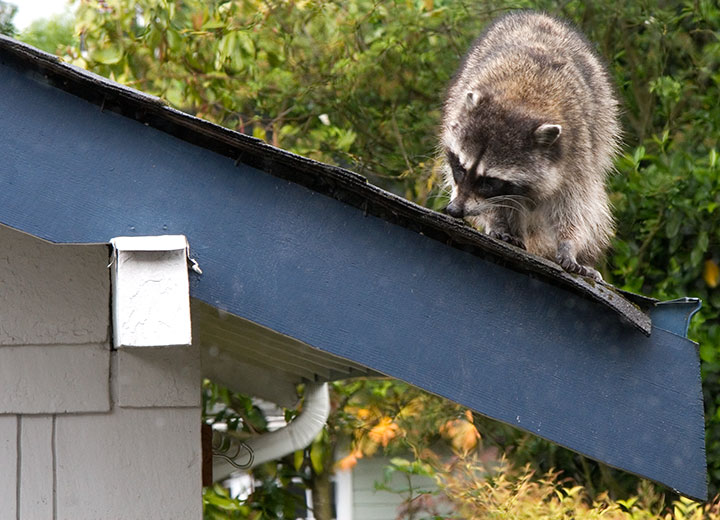
and once more for this:

So thanks for being patient and flexible—we’re all straightened out now.
Now, to all of you: I simply can’t find the words to express my thanks. Your emails poured in; you called to congratulate us; you posted comments; you told your friends; you spread the word like wildfire on Twitter and Facebook; you shared your stories. You have continued to show your unflagging support for a gal trying to make a living by drawing pictures. And you have reminded me that on the whole people are good, and that we want to come together to heal the damage in the Gulf—and to come up with a better solution for everyone. That brought me to tears all over again—this time, the kind that come with a smile.
I’m off to send our donation to Oceana. With everything I have, thank you all. I can only hope my drawings can be worthy of your hearts.
• • • • • • • • • • • • • • • • • • • • • • • • • • • • • • • • • • • • • • • • • • • • • • • • • • • • • • • • • • • •
Update: we are now completely SOLD OUT. Thanks, everyone!
May 18th, 2010
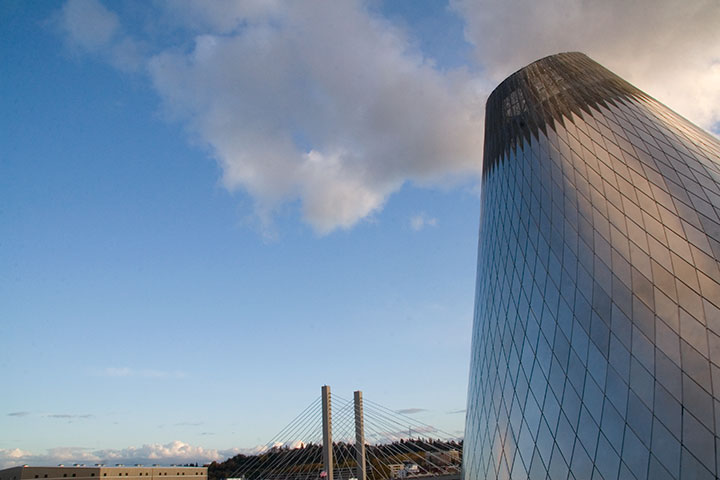
I’ve had volcanoes on the brain for nearly two years. Littering my studio are volumes of sketches, nearly 6,000 photographs, reference books, stacks of maps, and a brand new, functional prototype of the artist book about Mt. Rainier I’m working on—all evidence of my attempts at capturing a series of fleeting moments and freezing them in time and on paper. (Rainier is hiding there in the clouds, at the bottom of the above photo—but what I love most is that the cone looks like an erupting volcano! And speaking of which…)
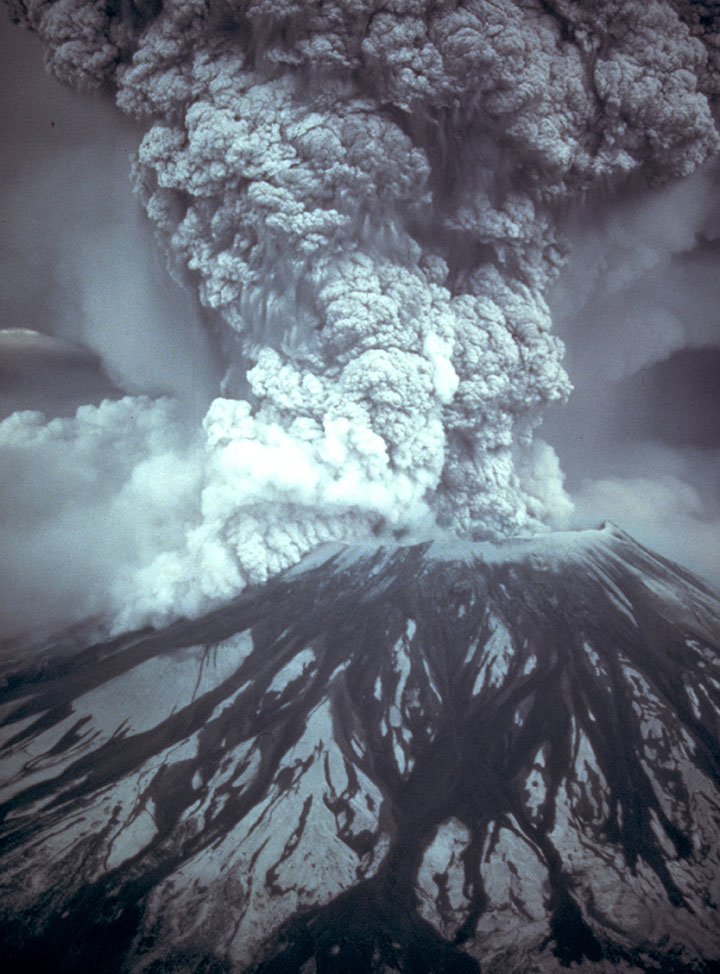
Photo by the U.S. Geological Survey
And then there’s the little corked bottle of volcanic ash on my desk, inscribed with the date of the last major eruption of Mount St. Helens: exactly thirty years ago today.
I’ve been staring at that bottle on and off, all day, reminded of why I’m doing all of this (and why I can’t wait until I have something to show you!).
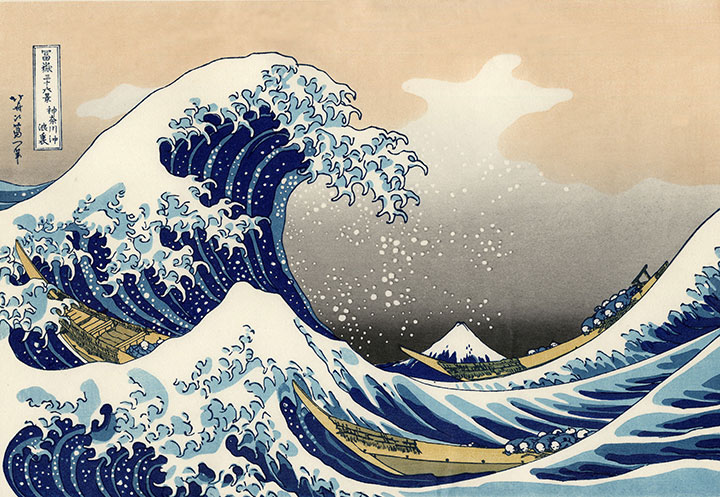
This project began as a tribute to Katsushika Hokusai, the Japanese printmaker and illustrator who created his famous Views of Mount Fuji woodblock series over 150 years ago.

Hokusai wanted to demonstrate the unchanging immortality of Fuji amidst the transient nature of everyday life. To him, Fuji was forever, an unshakable icon of Japan and one of the foundations of his culture.
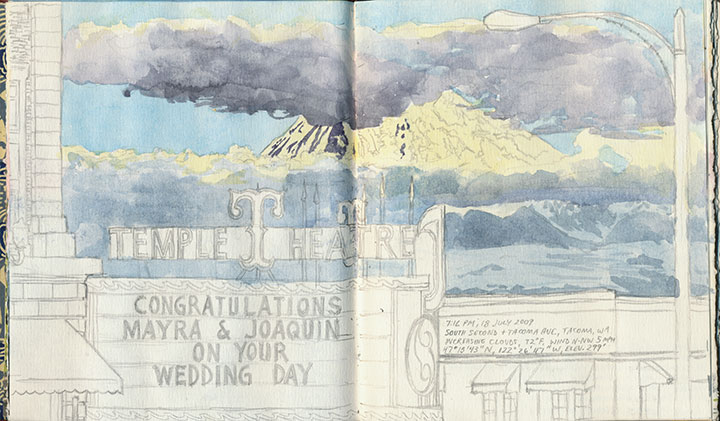
The trouble is, Fuji is a volcano—just like Rainier and St. Helens—that by its very nature is constantly changing right along with the lives being lived in its shadow. That knowledge is where I found the root of my own project, and since then I’ve tried to document the fire mountain in my own back yard—to be there for every change and permutation.

Today’s date lit a bit of a fire under me, and prompted me to get on with the business of finishing this artist book. Because one day this is all going to happen again. Mount Saint Helens will be first, I’d wager; being the most active and youngest volcano in the Cascades, it may only be a matter of a few years. And some day, even if it’s a hundred or a thousand years from now, Rainier is going to have its turn, too.
For now, though, I’m just doing my best to pay attention to the present moment, because one day I may need help remembering how things used to be.

![Chandler O'Leary [logo]](https://chandleroleary.com/wp-content/themes/chandleroleary/images/logo.png)































































